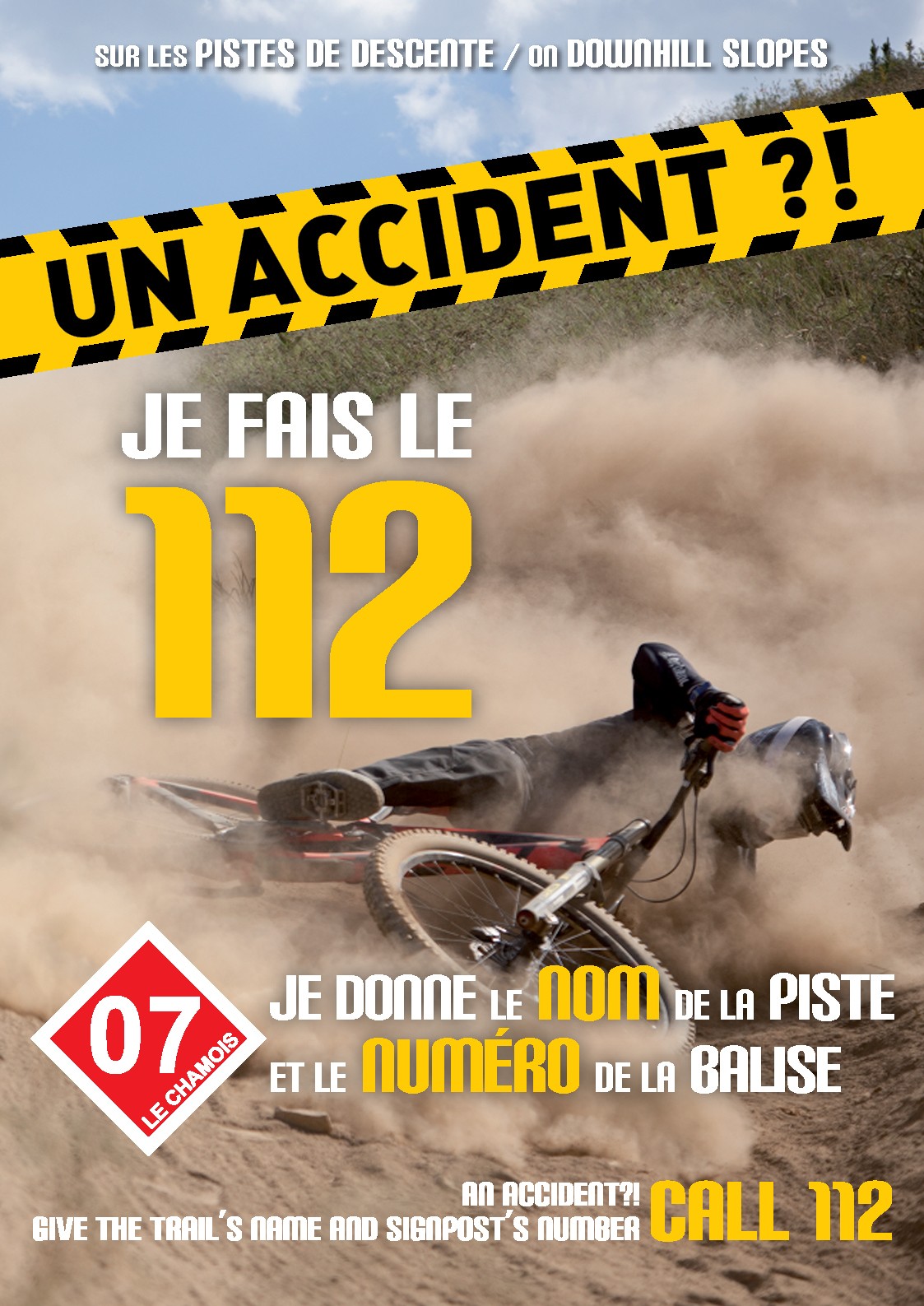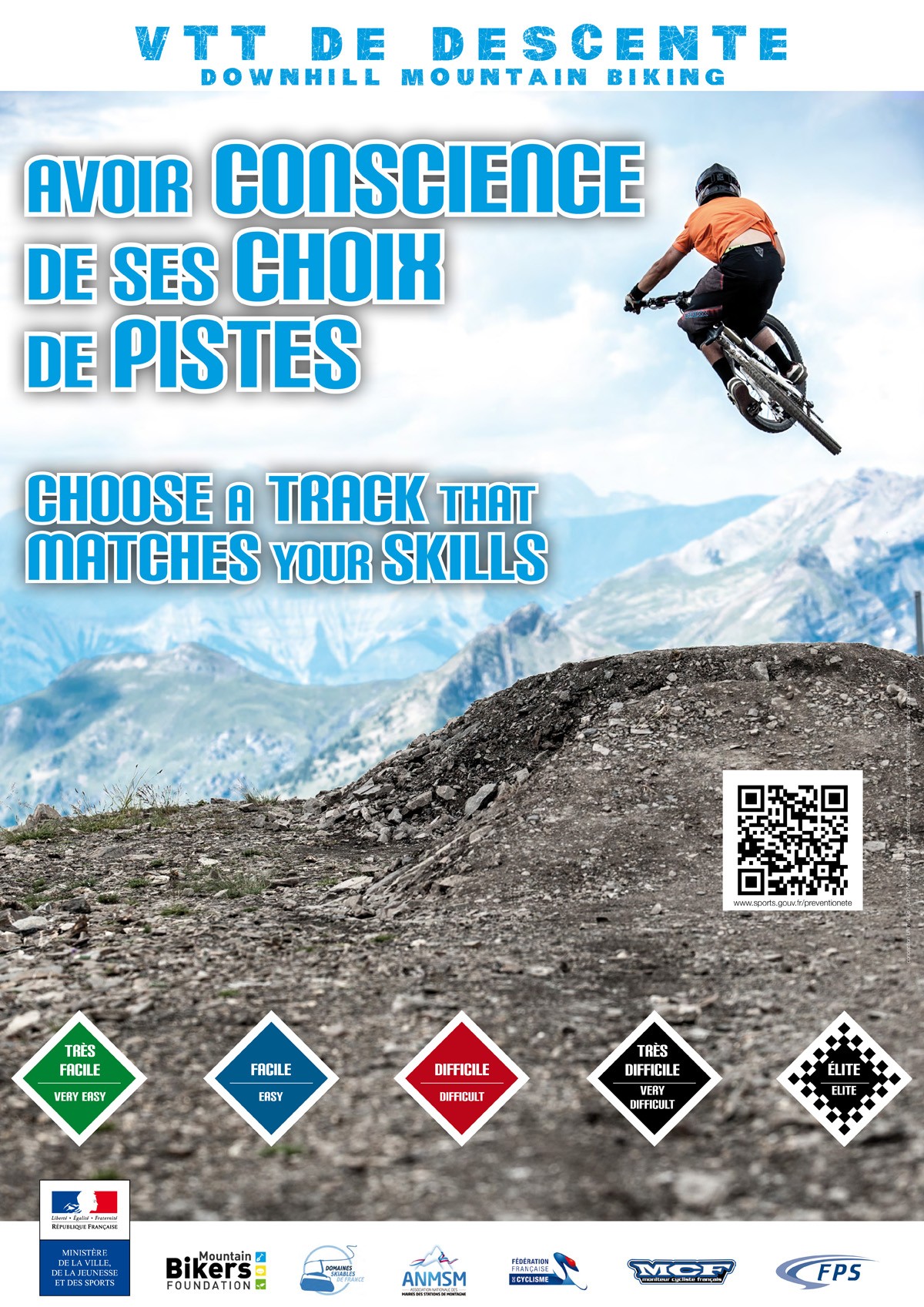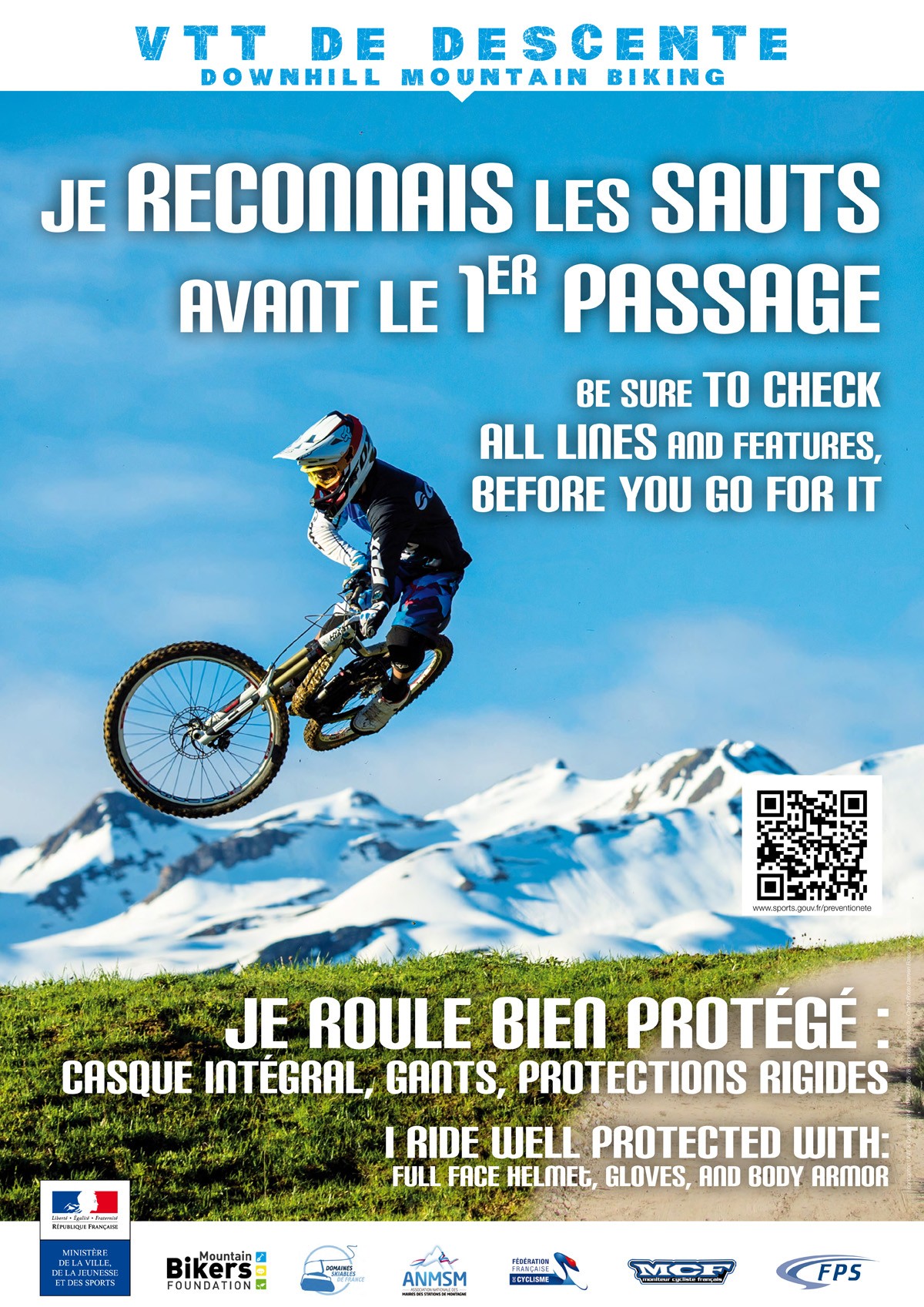MTB prevention and safety
Mountain rescue : 112
- Learn the right moves from a specialist, especially if you are a beginner.
In Chamrousse, mountain biking supervision is available from a French Cyclist Instructor (MCF) from the Chamrousse MCF cycling school at SGAMBATO SKI SHOP SPORT 2000.
- Before each ride, check the condition of your bike: tightening, tyre pressure, brakes, steering, battery charge level for electrically assisted mountain bikes...
- Always lower the saddle before going downhill to reduce the risk of falling.
- Adapt your speed in all circumstances and, if necessary, get off the bike when approaching a dangerous or difficult section.
Compulsory equipment
The downhill tracks are technically difficult and require adapted equipment. Wearing a helmet is obligatory and protective gear is strongly recommended.
Signs
Just as the ski slopes, the downhill tracks are marked according to their level of difficulty (sign with the track’s name and colour) to mention in the event of a rescue.
Respect of natural spaces
Please stay on the tracks and respect the flocks, ride slowly when you meet the sheep. Please respect the markers and the security signs. Don’t throw your rubbish.
Electrically assisted mountain bikes
The electrically assisted mountain bike (EABT) is becoming increasingly popular with the public.
It allows the barriers of physical difficulty of this sport to be broken down by offering a wider public the possibility of going on rides, or even longer tours. Mountain biking and the pleasure it brings (contemplating different landscapes during a ride, for example) is no longer reserved for seasoned athletes and now attracts new users who, without assistance, would have been afraid to try it, considering it too physical. More than an opening to a wider public, electric assistance is in fact a way for mountain biking to become a group activity, and no longer an individual one.
However, if assistance makes it possible to abolish physical barriers, it does not in any way replace the technique required to ride a mountain bike.
As with a mountain bike, the rider is exposed to the risk of falling or continuing on foot if he or she takes a route that is not adapted to his or her level. In addition, the weight of the ATV, which is greater than that of a conventional mountain bike, could constitute an additional difficulty in overcoming natural obstacles in portage/pushing areas. It therefore seems important that everyone should be able to find routes that correspond to their level, without hesitating to call on the services of professionals to ensure that the e-bike is used in complete safety.
What regulations apply to the e-bike?
The European standard AFNOR NF EN 15194 of January 2012 is precise: electrically assisted cycles must have a maximum continuous power rating of 0.25 kW. The power supply is gradually reduced, and finally interrupted when the vehicle reaches a speed of 25 km/h, or if the cyclist stops pedalling. Once these values are exceeded, the vehicle is considered a motorcycle.



